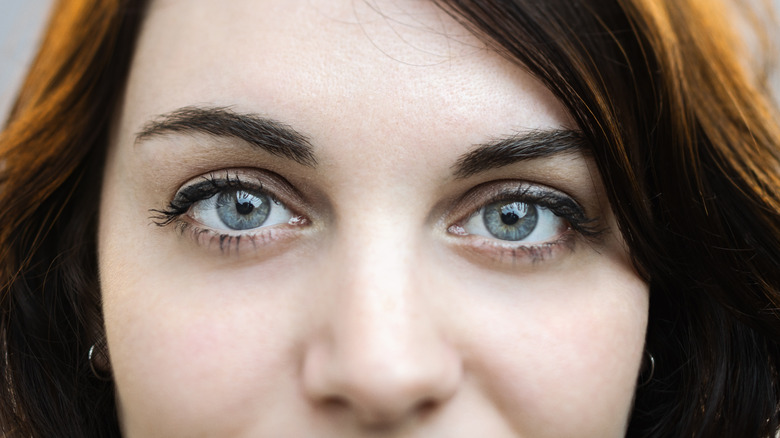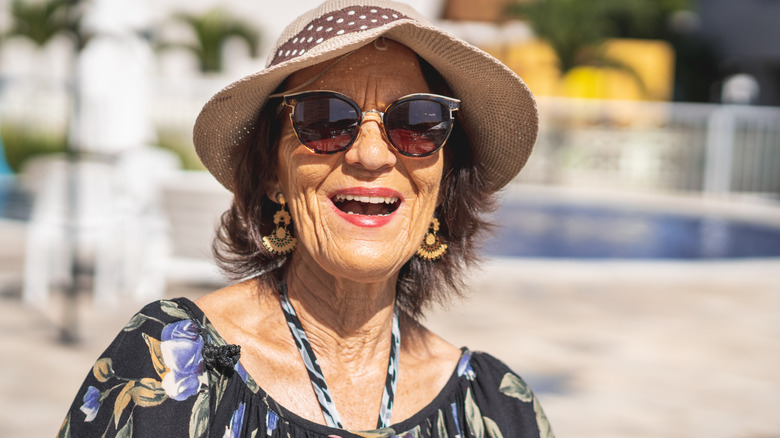Why People With Gray Eyes Are More Sensitive To Light
Faced with the glare of the sun on a cloudless day, many of us instinctively try to shield our eyes from the intense light. While a sunny day can be bothersome to our eyes (no matter what color they are), for some, this brightness can be all the more powerful. Certain eye colors are highly sensitive to the sun's rays. People with gray eyes are among those who experience this heightened sensitivity to light — otherwise referred to as photophobia, according to experts at the Vision Center.
Fewer than 3% of people around the world have gray eyes, and they can appear in a wide range of shades. Why is this? It's melanin that is responsible for the degree of pigmentation in the eyes, as decided upon by our genetics. However, people with gray eyes don't have any melanin in the iris. So what exactly does melanin have to do with light sensitivity?
Less melanin in the eyes, less light protection
Experts at the Milan Eye Center liken the melanin in our irises to that of a pair of sunglasses — it serves as a protective barrier. For those with brown eyes, for example, when light makes contact with the iris, all that heavy pigmentation helps obstruct the light from entering the back of the eye. For people with gray eyes, however, less melanin means more light is allowed to enter the eye. Even more, some people additionally have less melanin in their retinas too, which can further compound the effects of photophobia.
While those with gray eyes may be more susceptible to photophobia, there are a number of other factors that can influence the development of the condition as well. This includes certain neurological conditions, eye infections, chronic dry eye, LASIK surgery, or the use of certain medications (via AARP). But it's not just the sun that can evoke the discomfort of photophobia. Those with the condition may also be affected by automobile headlights, bright indoor lighting, or blue light from devices.
Tips for reducing photophobia
If you find yourself experiencing symptoms of photophobia, consider speaking with your doctor to determine if there may be an underlying medical cause. In some cases, medication may be required. Otherwise, it's important to take care of your eyes on a regular basis and wear protective eyewear when needed. This includes utilizing a pair of polarized sunglasses with UV protection when outside. Tinted glasses or contact lenses, otherwise known as transition lenses, can also be helpful (via Milan Eye Center).
While protection against bright light is key, the point is not complete avoidance. "The biggest mistake that people make is wearing really dark sunglasses indoors or putting dark shades on their windows," Dr. Kathleen Digre, a professor of ophthalmology and neurology at the John A. Moran Eye Center at the University of Utah, told AARP. "That only makes things worse because you become dark-adapted." Rather, individuals with gray eyes may benefit more by allowing for gradual light exposure when moving from a darker environment into a brighter one. Easing into your surroundings — instead of walking out into sunlight too suddenly — can also help your eyes slowly adapt to the change.



